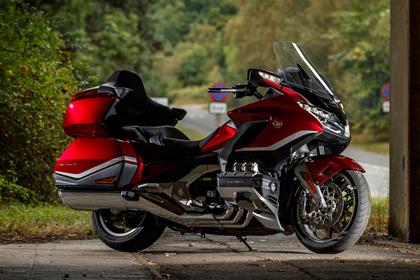Honda Gold Wing - your in-depth guide to the ultimate in luxury motorcycle touring, from early models to special editions
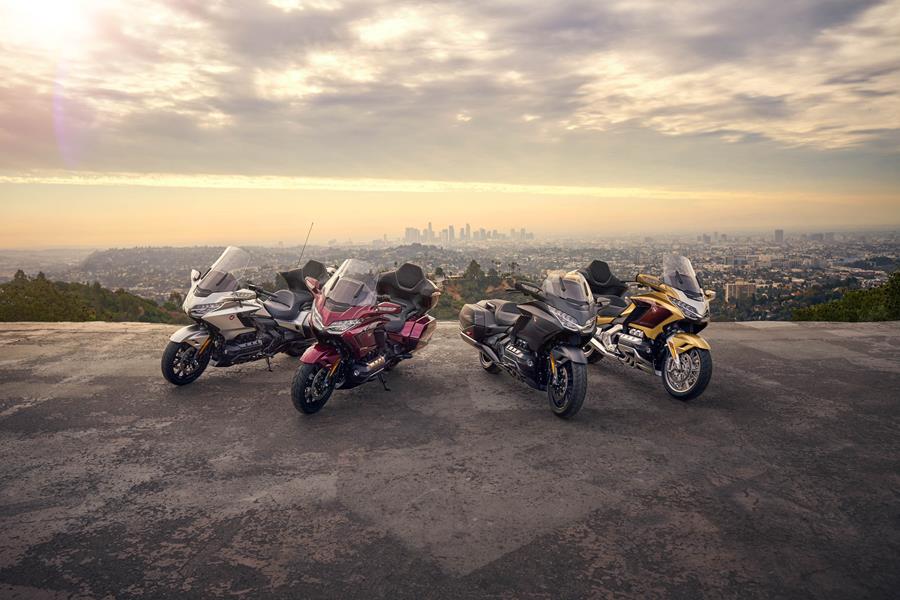
Honda celebrated 50 years of the Gold Wing name in 2025 – with a freshly updated, Euro5+ compliant model making its UK debut at the Devitt Insurance MCN London Motorcycle Show at the ExCel arena.
One of the longest-standing names in motorcycling, the Gold Wing has developed into a byword for luxury – famed for its unparalleled rider and pillion comfort, substantial bodywork, surging six-cylinder engine, and car-rivalling technology.
But the Wing hasn’t always been this way. Launched in 1975, the original GL1000 Gold Wing was the first four-stroke motorcycle to gain liquid cooling and started out as a naked sportsbike with a flat-four engine and shaftdrive. It was conceived to be the next flagship superbike in Honda’s range after the incredible success of their CB750.
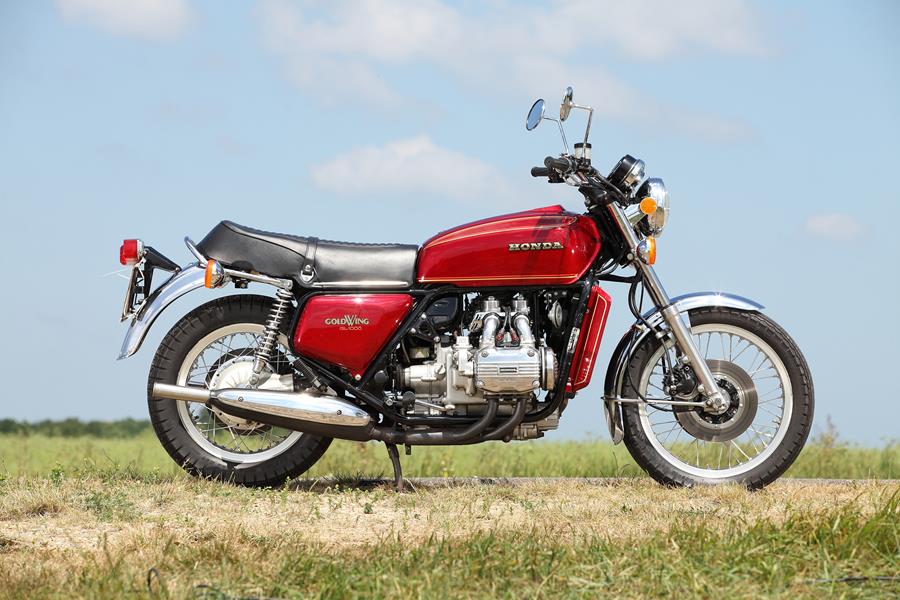
We first got our hands on the original ‘Wing in June 1975, riding the bike around the Isle of Man TT circuit. Speaking at the time, Road Tester Bob Goddard said: “With the Gold Wing’s 80bhp and massive low-down torque you could pull a double-decker bus.
“From 3000rpm the big flat four surges away like a train and the power flows smoothly in all the way up the rev range.”
The bike began to take on the grand tourer appearance we know today with the arrival of the Interstate edition of the GL1100 Gold Wing in 1980 – featuring a front screen and saddle bags. The production base was moved from Japan to the USA at the same time.
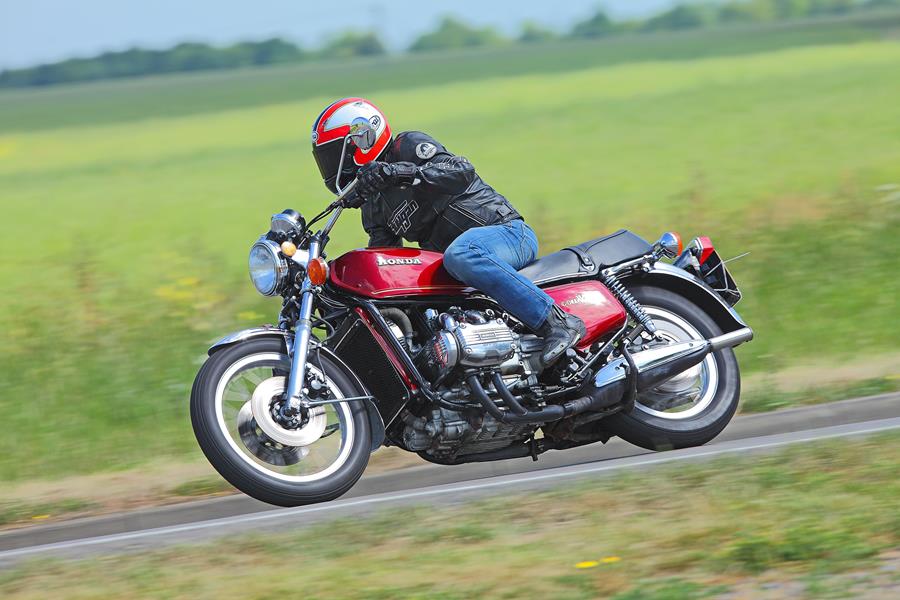
Honda upped the luxury stakes in 1984, with the introduction of the GL1200 Gold Wing – the first Honda to feature fuel injection, cruise control, auto-levelling suspension and a trip computer. Put simply, it was cutting edge – with a radio, cassette player, intercom and more.
- Related: Best luggage for a motorcycle tour
In 1988, the Gold Wing climbed to a six-cylinder engine for the first time – ditching a four-pot in favour of a new five speed, 12v 1520cc flat six.
Developed over five years for a predominantly American market, the 1500 Gold Wing retained the silky-smooth character of the previous incarnation and combined it with a near silent engine tone to create a gentle mile-muncher, capable of sublime comfort. A reverse gear and low-slung seat height makes moving the bike at low speed a doddle, too.
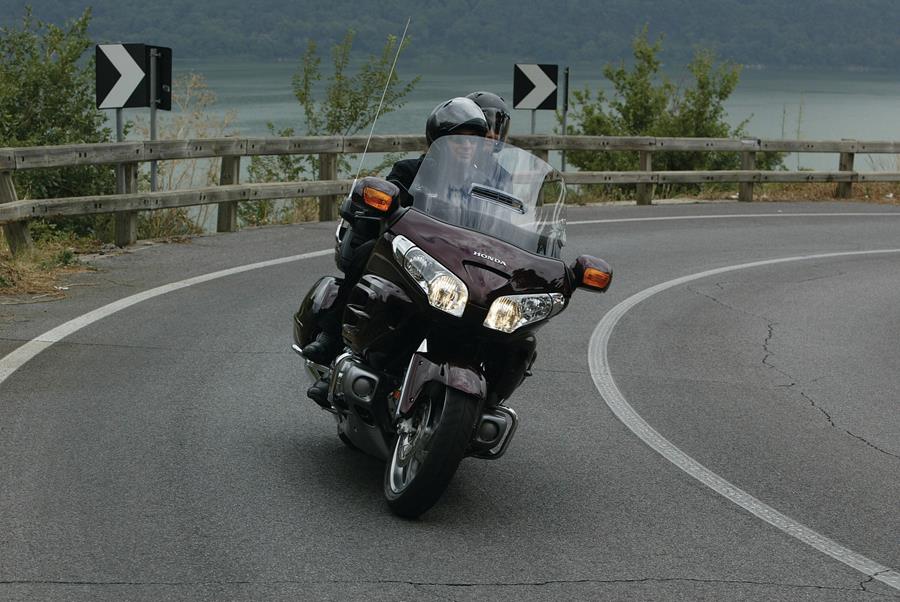
Finally, in 2001, the Gold Wing grew to a GL1800 – a name that it has retained until present day (2025). The 2001 version was the first new model for 13 years and had a lot to live up to.
The bike is supremely comfortable and roomy and much lighter than its predecessor, due to the addition of an aluminium chassis. It remains a solid buy, holding a strong value on the used market.
- Related: Honda GL1000 Gold Wing custom
Post 2006, the bike also had optional extras such as in-built GPS, heated seat and bars and a vent which blew warm air from the engine onto the footboards.

The Gold Wing got its last major overhaul in 2018 – providing a huge leap forward in both performance and dynamics. Available in a number of flavours, with manual and semi-automatic DCT gearboxes available, it was light years ahead of the old model, with significantly improved handling, ease-of-use, and fun.
- Related: Best semi-automatic motorcycles
It’s now available in both a GL1800 Gold Wing, and GL1800 Gold Wing Tour (with rear storage box) with the top-spec Tour models now starting at almost £33,000.
Honda Gold Wings over the years
Jump to:
- Honda GL1500 Gold Wing (1998-2000)
- Honda GL1800 Gold Wing (2001-2017)
- Honda GL1800 Gold Wing (2018-2024)
- Honda GL1800 Gold Wing (2025-on)
Honda GL1500 Gold Wing (1998-2000)
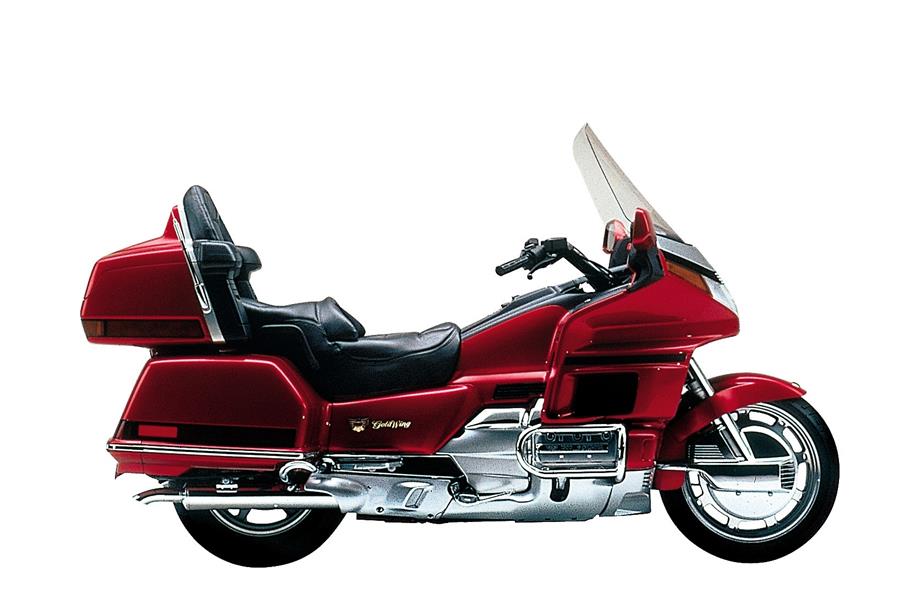
Despite early models now being almost 30-years-old, the 1998-2000 Honda Gold Wing continues to command big money on the used market – with low mileage examples still priced at between £5500 and £6000 (2025 pricing).
Initially launched in 1988, the GL1500 was powered by a new, flat-six engine promising a smooth power delivery for comfortable, non-nonsense mile munching. As with all Gold Wings by this point, it was fully dressed in cocooning weather protection and sublime comfort for both the rider and pillion.

Equipment levels were unparalleled at the time too, with an SE version arriving in 1990 promising a stereo, cruise control, air vent systems, two tone paint, and more. In a world where carburettors were still all the rage, it was a space age proposition.
By the time 1998 rolled around, the 1500 was in its final phase and remained basically unchanged until the first GL1800 rolled off the production line on October 10, 2000, in Marysville, Ohio.
Read our in-depth Honda GL1500 Gold Wing (1998-2000) review here
Honda GL1800 Gold Wing (2001-2017)
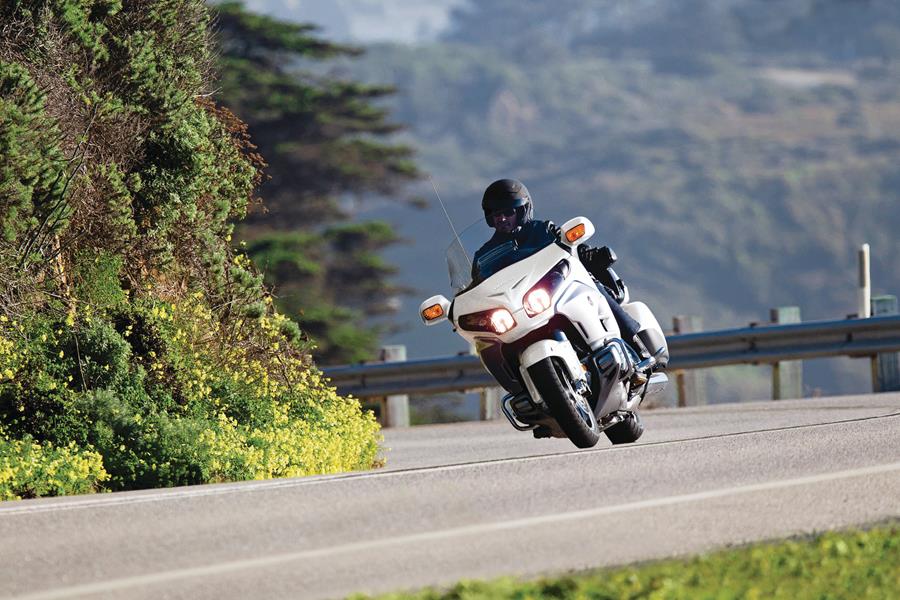
The Japanese grand tourer was upgraded to an 1832cc GL1800 for 2001 – powered by an opposed flat six engine that is both smooth and surprisingly pokey. There was enough forward momentum to shame plenty of sports cars, however it could get thirsty if you were too keen with the throttle.
Despite weight being in the region of 363kg, the GL remained surprisingly light on its feet and was capable of entertaining on a twisty lane. A special edition arrived in 2005 to mark 30 years of the name, as well as the production of 500,000 Gold Wing models.
Unsurprisingly, the levels of equipment remained cutting edge, with some bikes fitted with cruise control, venting, and seven a six-CD changer for your tunes. A GL1800 equipped with a front rider airbag also appeared in North America and Europe for 2006.
Read our in-depth Honda GL1800 Gold Wing (2001-2017) review here
Honda GL1800 Gold Wing (2018-2024)
Simply put, the Gold Wing that arrived for 2018 was the biggest overhaul in decades, with a new twin-spar chassis housing a lighter, more refined engine available as both a manual or semi-automatic DCT option.
Compared to the 2017 bike, Honda managed to shave down a claimed 48kg, with the new engine alone shedding 6.2kg.
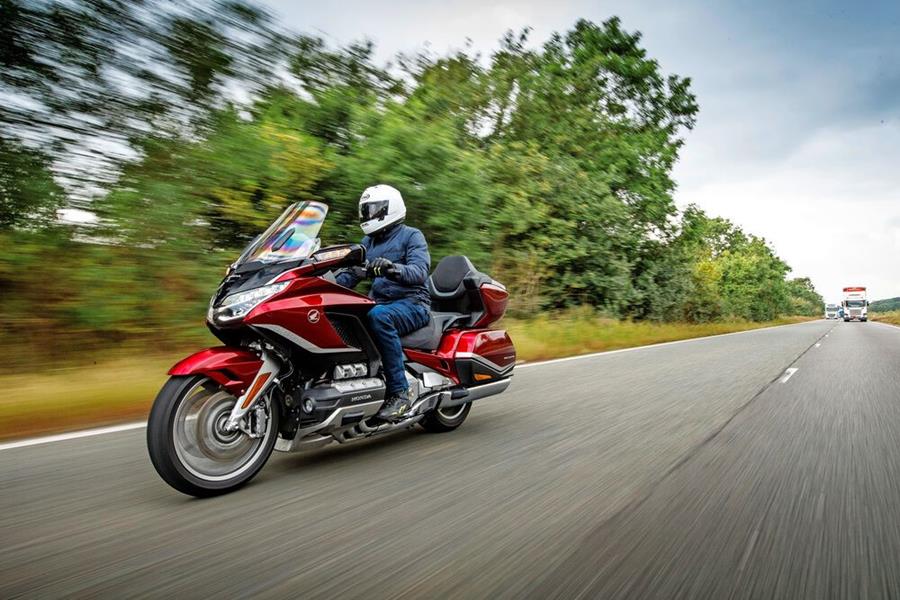
A clever double-wishbone front end separates braking, suspension and steering forces, too and the bike comes available as either a fully-dressed Tour model or stripped back standard model that ditches the rear luggage box and pillion back support.
In 2021, the Wing was tweaked – with gentle updates to the passenger comfort. The backrest was set at a more relaxed 23-degrees, rather than the 16-degree stance and there was more luggage space, and slightly louder speakers to pass the time on long stretches of motorway.
Read our in-depth Honda GL1800 Gold Wing (2018-2024) review here
Honda GL1800 Gold Wing (2025-on)
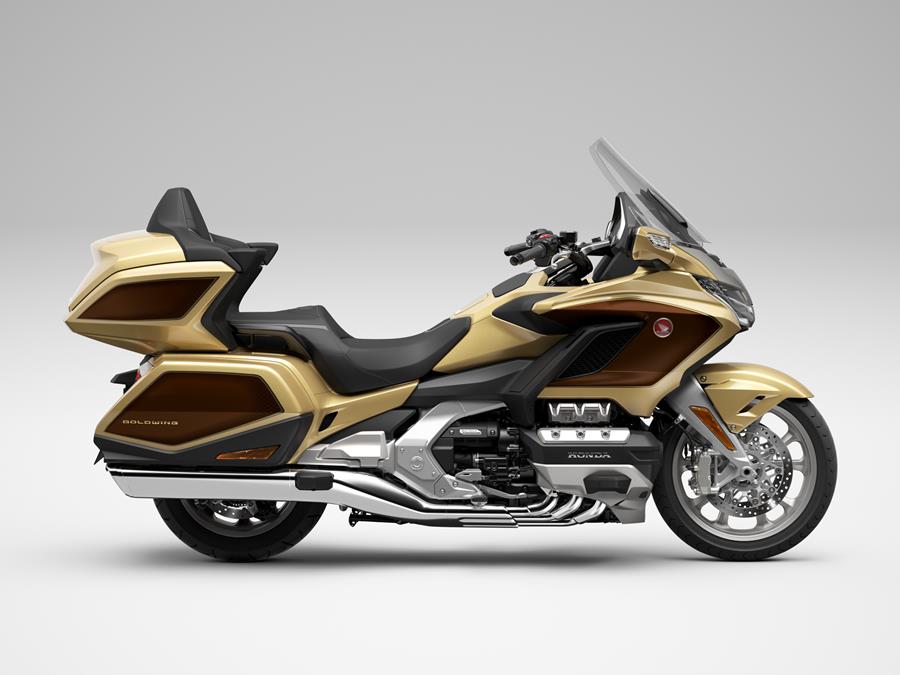
2025 marks 50 years of the Gold Wing family, with the latest model receiving a series of gentle updates to help mark the anniversary.
The 124.7bhp six-cylinder engine now meets Euro5+ regulations thanks to an additional O2 sensor, and tweaks to the ECU settings – with options available for both manual and semi-automatic DCT settings.
Amongst the nods to the bike’s rich history are two paint finishes inspired by models of old. This includes a combination of Eternal Gold and Mahogany Brown to mimick the 1988 GL1500 variant and a special loading graphic on the seven inch TFT screen.
Wireless Apple CarPlay and Android Auto available, and whilst we’re yet to get our hands on the bike for a full test, it looks to be the most refined and technologically advanced Gold Wing yet.
Other motorcycles inspired by the Honda Gold Wing
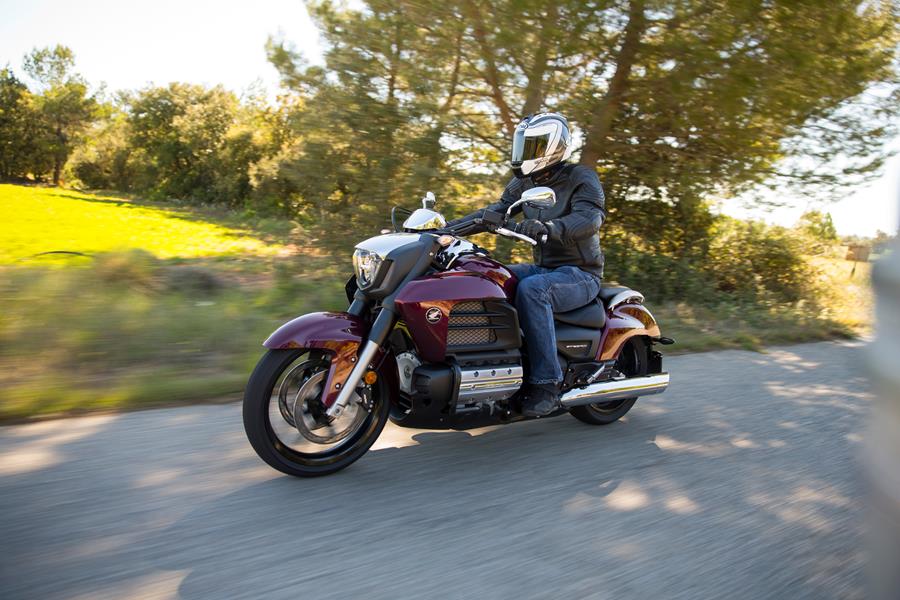
Although the current GL1800 Gold Wing range is limited to the standard and Tour model variants, Honda have previously used the Wing platform to produce a number of big-capacity naked cruisers, as well as more stripped-back bagger variant called the F6B.
The F6B was produced from 2013 to 2017 and – although looking similar to the 1832cc, six-cylinder Wings of the time – it was lighter, and capable of over 40 degrees of lean before decking out its mid-mounted pegs.
It was priced at £20,399 when new, and tipped the scales at 382kg, with a low seat height of just 725mm.
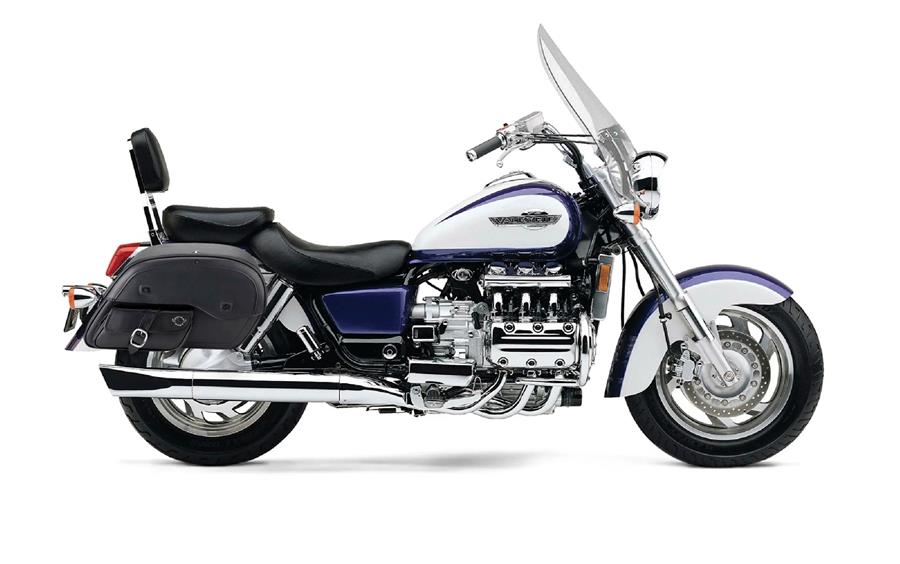
From 2014 to 2016, we also got the Honda F6C – an enormous six-cylinder cruiser that only lasted a few years in the UK. The 1832cc flat-six engine is the star of the show and was unaltered from the Gold Wing of the time. Expect to pay between £9500 and £13,000 on the used market.
Going back in time, 1996 to 2003 also saw Honda produce the Valkyrie F6C – a big capacity cruiser that continues to hold cult status in the UK.
Essentially a stripped down Honda GL1500 Gold Wing, it featured lower gearing and six carbs, and whilst it was fast it was easily out accelerated by the Triumph Rocket III, and Yamaha V-Max of the time.

In 2003, Honda also launched a radical Valkyrie Rune – a limited run futuristic cruiser that arrived in dealers from 2004. It was powered by the ‘Wing’s 1832cc six-cylinder engine and came presented in a look more akin to a concept bike than a finished production machine.
There were heavy licks of chrome, and limited availability. Bikes are now hard to come on the used market.


